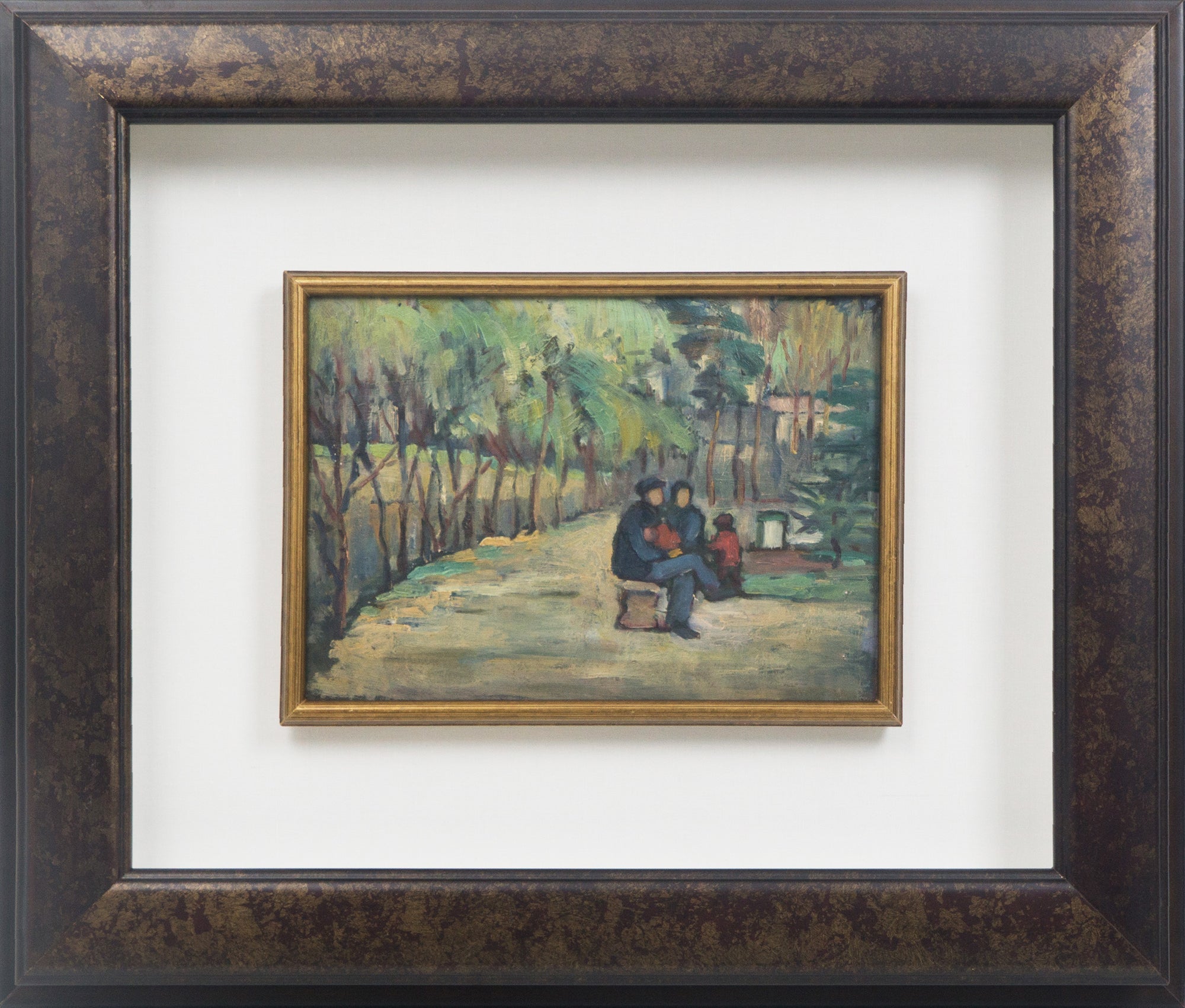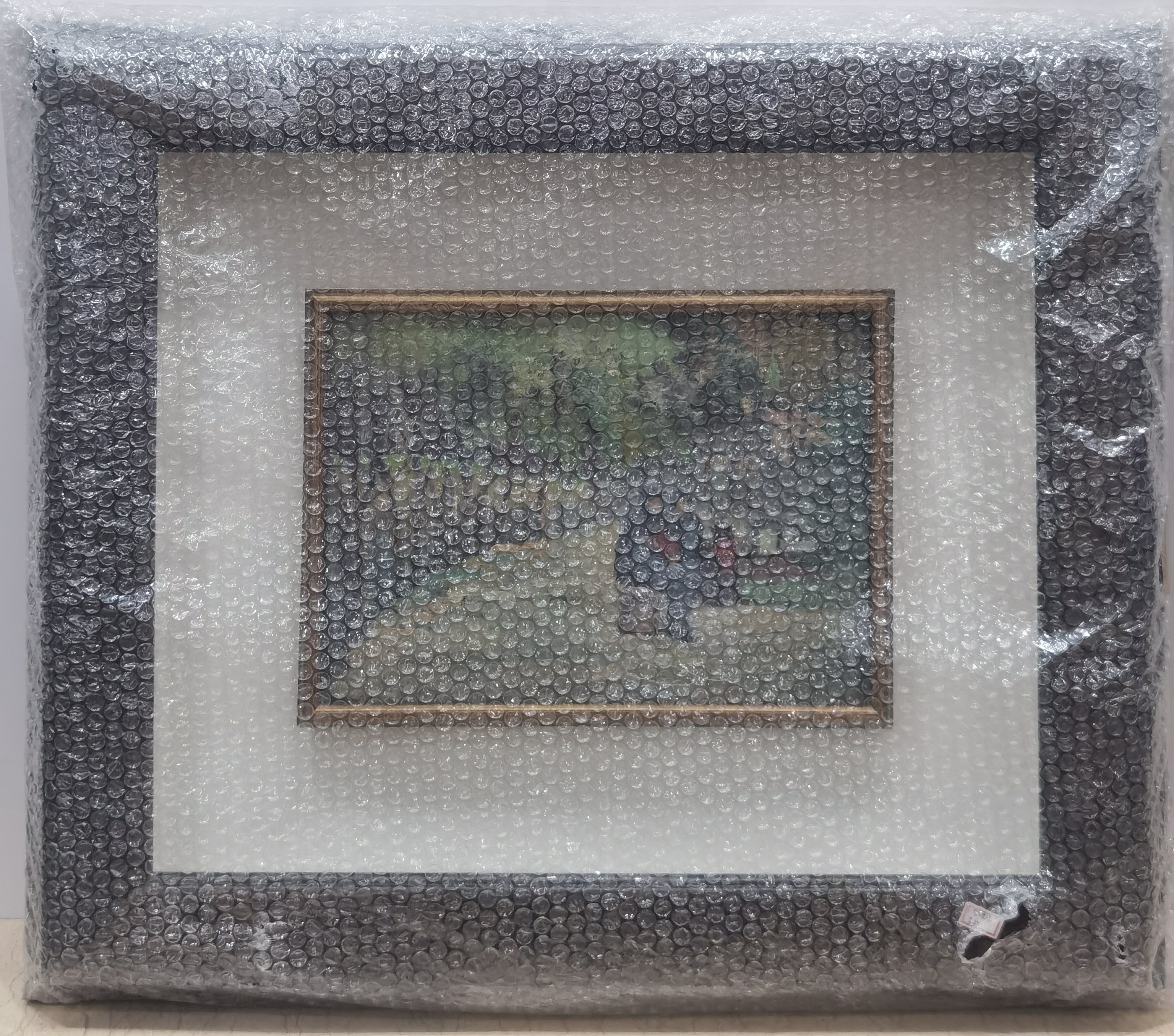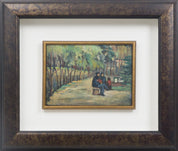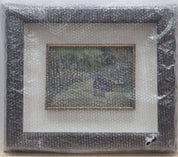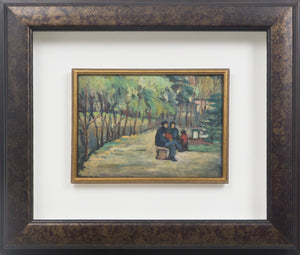School
Tang Yunyu
Artwork Details
Artwork Description
Title: School
Artist: Tang Yunyu
Date: n.d.
Medium: Oil
Dimensions: 9.1 x 13.0 in (23 x 33 cm)
1. Artwork Identification
Rendered in soft, impressionistic brushwork, School captures a tranquil outdoor moment with figures seated along a tree-lined path, evoking themes of everyday serenity and introspection. The setting, likely a school courtyard or park, emphasizes a harmonious blend of nature and human presence, with subdued tones suggesting the calm rhythm of daily life.
2. Artistic Style and Influences
Tang Yunyu’s signature impressionist style is evident in this intimate composition, where dappled light and fluid color transitions create a dreamlike ambiance. Influenced by her studies in Japan and France, Tang synthesized Western techniques with a deeply Chinese sensibility, producing works marked by compositional balance and a quiet emotional resonance. The brushwork in School subtly echoes Cézanne’s structural forms while maintaining a lyrical elegance unique to Tang.
3. Historical Context
Tang Yunyu was a formative voice in 20th-century Chinese art, navigating the cultural shifts of pre- and post-revolutionary China. Her active role in Shanghai’s modernist circles during the 1930s positioned her alongside other pioneering female artists, such as Pan Yuliang. This painting likely dates from a period when Tang was deeply engaged in merging classical Chinese aesthetics with international impressionist trends, reflecting a broader national dialogue on artistic modernization.
4. Provenance
Provenance documentation can be provided upon contact.
5. Condition and Conservation
The painting is in very good condition. The surface shows no signs of damage or restoration, and the original pigments retain their clarity and tone. The work is professionally framed in a complementary dark wooden frame with a gilt inner edge, enhancing its visual depth and preservation.
6. Artistic Significance
School exemplifies Tang Yunyu’s pioneering role in modern Chinese art as one of the few women of her generation to gain critical and institutional recognition. Her ability to convey social harmony through quiet, observational scenes is a hallmark of her legacy. This work is an exquisite example of her refined brushwork and emotive restraint, making it a valuable acquisition for collectors of early Chinese modernism and gender-inclusive art histories.

